- News
- Reviews
- Bikes
- Accessories
- Accessories - misc
- Computer mounts
- Bags
- Bar ends
- Bike bags & cases
- Bottle cages
- Bottles
- Cameras
- Car racks
- Child seats
- Computers
- Glasses
- GPS units
- Helmets
- Lights - front
- Lights - rear
- Lights - sets
- Locks
- Mirrors
- Mudguards
- Racks
- Pumps & CO2 inflators
- Puncture kits
- Reflectives
- Smart watches
- Stands and racks
- Trailers
- Clothing
- Components
- Bar tape & grips
- Bottom brackets
- Brake & gear cables
- Brake & STI levers
- Brake pads & spares
- Brakes
- Cassettes & freewheels
- Chains
- Chainsets & chainrings
- Derailleurs - front
- Derailleurs - rear
- Forks
- Gear levers & shifters
- Groupsets
- Handlebars & extensions
- Headsets
- Hubs
- Inner tubes
- Pedals
- Quick releases & skewers
- Saddles
- Seatposts
- Stems
- Wheels
- Tyres
- Health, fitness and nutrition
- Tools and workshop
- Miscellaneous
- Tubeless valves
- Buyers Guides
- Features
- Forum
- Recommends
- Podcast
feature
10 of Shimano and Campagnolo's worst ideas
The Big Two in cycling components, Campagnolo and Shimano, have delivered us lots of great bike parts over the years. But now and then it all goes horribly wrong. Let’s take a look at some of their worst blunders.
Shimano HollowTech II cranksets: might split in two
The most recent failure on Shimano’s part came with its HollowTech 2 cranksets. As the name suggests, these cranks are hollow inside, with two alloy pieces being bonded together. The theory is sound, and to be fair to Shimano, many people have experienced zero issues. But when they failed, they really went in dramatic fashion.
The cause for these issues seems to be water ingress. It would work its way in through the hollow axle, get busy causing some corrosion in the bond structure and that’s when you’d find your crankset in two pieces.
With its new 12-speed groupsets, Shimano says that the issue has been resolved, and was quite adamant that there was never an issue in the first place for many years... but finally, in September 2023, Shimano announced a voluntary inspection and replacement recall notice for 760,000 Dura-Ace and Ultegra bonded 11-speed road cranksets, after thousands of snapping incidents worldwide and what seemed like as many emails sent to us as part of our own internal investigation into the creaky cranks.
> Check your cranks! Shimano finally recalls 11-speed road cranksets after more than 4,500 incidents
Campagnolo Delta brakes: looked great, worked indifferently, weighed lots
Widely considered one of the most beautiful bike parts ever made, these centre-pull brakes undeniably looked stunning. Unfortunately, that’s about where their good qualities ended.
On paper, the idea was good: a centre-pull brake with the mechanism — a parallelogram of levers and pivots — hidden from the world by an aluminium cover. The Delta was part of perhaps the best-looking Campagnolo group ever made, 1986’s C-Record and the brakes were the jewel in the group’s crown, with meticulous polishing even in places where nobody would ever look.
The first version was recalled because, depending on who you believe, the pads could fail from over-heating on long descents or the cable clamp could fail, leaving you with no braking at all.
Subsequent versions solved that problem, but still didn’t stop mechanics complaining that the Deltas were hard to work on. The cable had to be long enough to reach the clamp, but no longer as there was nowhere for excess cable to go.
The cable clamp used a 3.5mm hex key, a size you won’t find in many off-the-peg tool sets. Campagnolo included one with the brake, but if you lost it a replacement was hard to find, especially in 1980s America, where Imperial units still reigned supreme. The last incarnations used a 4mm hex bolt instead.
This didn’t solve what some engineers saw as the brake’s fundamental flaw, that the mechanism inherently provided inconsistent braking power and as the pads wore you could end up with no braking at all.
Jobst Brandt, author of ‘The Bicycle Wheel’ was a trenchant critic of the Delta brakes. Brandt had worked on brake design for Porsche and observed that “variable ratio brakes [are] known to be useless … It should be mechanically obvious that a regular-parallelogram when at extreme extended position (cable fully extended) has zero mechanical advantage and at the other extreme (the cable corners together) has an infinite mechanical advantage. This is not a logical range in which to operate a brake, nor is even a part of that range.
“Such a characteristic is unconscionable for any brake manufacturer to offer as a brake, and even more so for one who sponsors racers who descend mountain roads or ride criteriums.”
They were also the heaviest brakes Campagnolo ever made, at 480g/pr. For comparison, a pair of 1981 Super Record brakes weighed 334g/pr, while a 2010 Super Record D Skeleton pair weighs 276g, almost half the Delta’s heft.
Despite all this, the Deltas’ sheer beauty makes them some of the most sought-after bike parts ever made. Prices of around $700/pr for a set in mint condition aren’t unusual, and many owners seem to still be perfectly happy with them.
I’ve only been able to skim the surface of the Delta story here. If you want to know more, take a look at this Italian article on them, with material gleaned from magazines and catalogues of the era; Retrogrouch’s article on the Deltas; Campagnolo fan site CampyOnly’s road test; and an amazing complete strip-down at Bikehugger that shows just how fiddly the internals were and will probably give nightmares to any mechanic who’s never encountered Deltas.
Shimano Dyna-drive pedals: great cornering shame about the bearings
The lower the rider, the better a bike corners. That was the idea behind these novel pedals which dispensed with a conventional axle so the foot — and therefore the rider — could be moved a couple of centimetres down.
Instead of bearings at each end of the axle, Shimano moved them into an over-sized pedal thread, an inch in diameter rather than the standard 9/16in. That meant you needed a crank with a larger pedal eye, and Shimano made those too.
Unfortunately the design put unusual loads on the bearings which reportedly didn’t last long as a result. The pedals were of course incompatible with any other cranks and at the time Shimano wasn’t big enough to have a new standard adopted by the rest of the industry. Even now it’s hard to imagine even Shimano forcing through a change to the pedal mount — it’s the last true standard in bike parts.
Campagnolo Power Torque cranks: once fitted, never removed
With over-sized axles and outboard bearings, modern chainsets are lighter and stiffer than old-style set-ups where the cranks bolted to a square-taper axle. As Shimano and others switched to two-part cranks, Campagnolo stuck with square taper for its cheaper models, while attaching a half-axle to each crank in its high-end Ultra-Torque system.
In 2011 Campagnolo introduced Power Torque. Like other two-part crank systems it has the axle permanently attached to one crank while the other is mounted on splines and held in place with a bolt (which requires a hulking great 14mm hex key; not hard to find, but not likely to be part of any mechanic’s existing tool kit). However, unlike the pinch bolts on Shimano’s two-piece cranks, or the self-extracting crank bolts on other designs, there’s no built-in way to get a Power Torque crank off the axle once it’s tight.
This, mechanics howled when they first had to take off a Power Torque crank, is bonkers. Then they nipped down their nearest tool shop for a mechanical puller so they could yank the crank off the axle and found that had to be carefully ground to fit behind the crank.
Five years later Campagnolo’s technical manual for Power Torque cranks still offered only a tiny hint as to how you were supposed to remove a Power Torque crank — a "type Beta/Usag extractor" is mentioned, but not which model (there are dozens) or how it should be used to avoid causing damage.
Tool makers like Park Tool and Cyclus have stepped up and made pullers to remove Power Torque cranks but it’s mystifying that Campagnolo itself hasn’t come up with a beautiful but insanely expensive tool for the job. After all, they do make a £190 chain tool and a £180 corkscrew.
Shimano Biopace chainrings: wobbliness to no avail
When Shimano launched this ill-fated mid-1980s attempt at popularising elliptical chainrings it released a paper on the idea via Bike Tech, a newsletter from the people who publish Bicycling magazine in the US. In summary, the paper goes: “Sensible argument, sensible argument, sensible argument, HUGE ASSUMPTION, sensible argument, sensible argument.”
The assumption was about the orientation of the long axis of the ellipse, which Shimano decided should be at roughly 90 degrees to the orientation of every elliptical chainring before or since.
This meant the gear effectively dropped through the power stroke, which felt weird but you got used to it. However, there were reports that for some riders it caused knee problems and at a time when Shimano’s target users, mountain bikers, were looking for ever-lower gears Biopace’s limitation of a 28-tooth inner ring was a serious flaw.
There was never any evidence that Biopace was more or less physiologically efficient than round rings. In the early ’90s Shimano quietly dropped it. The company had moved its attention to better gear shifting and had come up with chainrings that incorporated shaped teeth and ramps like its Hyperglide rear sprockets. These didn’t work with Biopace, which gave Shimano a face-saving way to drop it, though by this point enthusiast riders had switched back to round rings anyway.
Campagnolo Super Record titanium bottom bracket: saved weight, broke
Replacing steel with titanium has long been popular way for bike component makers to save weight. There are plenty of sub-components where this works really well: cable clamp bolts, adjusting screws, even rear derailleur mounting bolts are loaded lightly enough that it doesn’t matter that the titanium part isn’t as strong as the steel part it replaces.
You’re probably thinking “Hang on, titanium has a better strength-to-weight ratio than steel.” That’s broadly true, but titanium is less dense than steel, so to get an equally strong part you need more of it. If a component can’t be made bigger, the titanium version will be weaker or less durable.
That was the problem with the Super Record titanium bottom bracket that Campagnolo introduced in the late ’70s. When it failed, it failed at the square taper, leaving a bit in the crank and bit sticking out of the bottom bracket bearings. In the 1982 Giro d'Italia, race leader Laurent Fignon had a bad crash thanks to a broken Super Record axle, sending Campagnolo back to the drawing board.
Version two solved the problem by holding the crank arm in place with a nut instead of a bolt so there was no thread inside the axle to provide a weakening stress riser.
Bad ideas never die for long in cycling. The drive to lighten mountain bikes in the early ’90s led to some very dodgy substitutions of titanium and even aluminium for steel. The bottom bracket was a target, being a big lump of steel, and failure-prone titanium axles again put riders on the deck. One solution proposed by Keith Bontrager was to use a 7mm bolt to hold the crank in place instead of 8mm. That meant the axle would be thicker and more durable. This was available as the Axiom titanium bottom bracket in about 1996.
The whole issue was made moot by the development of splined, hollow bottom bracket axles and then two-piece cranks with even larger axles.
Shimano SPD-R pedals: you can clip in but you can never leave
While Look was creating and then dominating the road bike clipless pedal category, Shimano saw an opportunity in the booming mountain bike arena. Instead of a big plastic cleat that stood proud of the sole, Shimano tucked a small steel cleat into a recess in the sole so you could walk in the shoes.
It was a runaway success first among mountain bikers and then touring and commuting riders who liked the security of being clipped in, but wanted to be able to walk when off the bike.
Shimano made several attempts to crack the road bike clipless market with designs that included a single-sided pedal that used the same two-bolt cleat design as the mountain bike pedals. The tiny cleat didn’t work for road cyclists who complained it allowed the shoe to rock on the pedal; there were even reports of powerful riders managing to twist the cleat out of the sole.
Shimano’s next attempt was even worse. The SPD-R pedal had two bolts on the centre line of the sole, so it required shoemakers to retool to accommodate it. Aside from Shimano few did so your shoe options were severely limited. It was hard to get out of SPD-R pedals, making them the Hotel California of clipless pedals: you could clip in, but you could never leave. The cleat was still relatively small compared to a Look cleat so your shoe was still not as stable on the pedal.
To be fair, one group of riders loved SPD-R: track racers. The difficulty of exit appealed to riders for whom an accidental pedal release was a disaster and over a decade after they were discontinued, they were still a cult item among trackies.
Shimano eventually gave trying to go its own way and produced the SPD-SL in 2002. It fit the same three-bolt mounting as Look and allegedly finally weaned Lance Armstrong off the long-discontinued late 80s Shimano/Look pedals he’d been using for 15 years.
Campagnolo SGR pedals: never mind the weight, feel the ratchet
In the 80s and 90s every component maker had a go at coming up with its own clipless pedal design. Some were more successful than others, and Campagnolo’s 1987 SGR pedals were definitely one of the others.
The cleats slid into enclosures on the pedal. If the cleats or the this enclosure were dirty, you couldn’t engage the pedal. If you walked in the cleats, they developed a burr and you couldn’t engage the pedal.
To clip in, the pedal had to be orientated with the enclosures up. It didn’t naturally hang that way and the toe-catch-flip action used with Look pedals didn’t work, so Campagnolo built in a ratchet that stopped the pedal rotating till you were clipped in. When this ratchet wore out, clipping in became tricky, to say the least.
You could adjust cleat angle and float with screws in the pedal. However, if you didn’t snug these screws into place they fell out.
Like Delta brakes, SGR pedals were a product of a ‘never mind the weight look at the shiny’ design regime at Campagnolo that culminated in 1989’s boat-anchor Euclid mountain bike components. By the mid-90s Campagnolo had remembered cyclists didn’t want to lug round unnecessary mass and dusted off the scales, but in the meantime the SGRs were about the heaviest clipless pedals ever made, and had so much steel in the internal mechanisms there was no way to lighten them.
Campagnolo subsequently sold a rebranded Look pedal, and then developed the Pro-Fit pedal which can still be found in some retailers though Campagnolo no longer seems to list it.
Shimano Sora brake/shift levers: beginners don’t need to shift from the drops
One of the most significant advances in the bike’s user interface in the last few decades was Shimano’s STI combined brake and gear lever design. With STI you never need to take your hands off the bars to change gears. In fact, it’s hard to imagine the road bike boom of the last decade or so without STI. Can you imagine the carnage in sportives as hundreds of us malco MAMILs fumble for down tube shifters?
But the mechanism of the classic STI design, with a pivoting brake lever and a second lever right behind it, is expensive to make. To make a cheaper version for the entry-level Sora group, Shimano moved one of the levers to the body and made it so small it was more like a button than a lever.
The problem was, the buttons could only be reached from the lever hoods. If you were in the drops going downhill, you couldn’t shift up the rear gears, which was a bit of a pain.
Almost every review of a Sora-equipped bike complained about this. As Dave Atkinson wrote when he reviewed the revamped Sora 3500 group in late 2013: “The old Sora lever featured the much-maligned Shimano thumb lever and a massive throw to change gear. They weren't great, and these are masses better.”
To its credit, Shimano has now entirely dropped shift buttons from its road component range; even the eight-speed Claris group has proper STI levers with full-size levers for both shift directions.
Shimano Dual Control MTB brake/shift levers: making flippy-flappy
Here’s an added extra for the mountain bikers among you.
After great success with STI Dual Control road bike levers, Shimano tried to take the concept off road in 2003 and 2004 with these levers in which the brake lever did everything. Pull it toward you to brake, push it down or up to change gear.
Mountain bikers were sceptical about the idea until they tried it; then they usually became downright hostile.
The practical problem was that it was hard to shift and brake at the same time because if you were pulling a lever toward yourself it was almost impossible to move it up or down.
One quirk of mountain bike Dual Control that impeded acceptance was that the rear derailleur worked the wrong way. Pulling the cable moved it from larger to smaller sprockets, while the spring did the work to go to larger sprockets, feature Shimano called Rapid-Rise or ‘low normal’.
For anyone who’d been riding for a long time, this was hard to get used to. In a review of a Dual Control-equipped Klein Palomino I wrote at the time: “Re-educating reflexes conditioned by almost 20 years of mountain biking was a slow and sometimes painful process as I repeatedly went up a gear instead of down. The problem wasn't that I had to push the brake lever up and down — I soon stopped groping for non-existent triggers — but that the tactile feedback wasn't what I was used to. On every other bike I own, pushing against derailleur spring resistance gives a shift to larger sprockets. With the Palomino's low normal set-up, resistance equals smaller sprockets. I struggled to adapt.”
I wasn’t the only one, but a bigger problem for Shimano was that the company’s near-monopoly on mountain bike components was breaking down, and locking together the shifting and braking systems with Dual Control looked like a desperate rearguard action to preserve it. Bike makers wanted to fit brakes from other companies alongside Shimano transmissions. Dual Control made that impossible.
Shimano quickly retreated, offering separate shifters again so bike makers could cook up their own choices of brake and gear systems.
Are these the biggest Shimano and Campag howlers of all time, or can you think of more? Let us know in the comments as always
John has been writing about bikes and cycling for over 30 years since discovering that people were mug enough to pay him for it rather than expecting him to do an honest day's work.
He was heavily involved in the mountain bike boom of the late 1980s as a racer, team manager and race promoter, and that led to writing for Mountain Biking UK magazine shortly after its inception. He got the gig by phoning up the editor and telling him the magazine was rubbish and he could do better. Rather than telling him to get lost, MBUK editor Tym Manley called John’s bluff and the rest is history.
Since then he has worked on MTB Pro magazine and was editor of Maximum Mountain Bike and Australian Mountain Bike magazines, before switching to the web in 2000 to work for CyclingNews.com. Along with road.cc founder Tony Farrelly, John was on the launch team for BikeRadar.com and subsequently became editor in chief of Future Publishing’s group of cycling magazines and websites, including Cycling Plus, MBUK, What Mountain Bike and Procycling.
John has also written for Cyclist magazine, edited the BikeMagic website and was founding editor of TotalWomensCycling.com before handing over to someone far more representative of the site's main audience.
He joined road.cc in 2013. He lives in Cambridge where the lack of hills is more than made up for by the headwinds.
Latest Comments
- perce 2 min 8 sec ago
Oh god is he still here? Still not found a publisher for his stories?
- chrisonabike 1 hour 34 min ago
You've been quoted in the article as being concerned "about the safety of cyclist and vehicles”....
- S.E. 6 hours 16 min ago
My guess is that they sell mainly on the German market - feel free to correct me. That might explain why they are not "pushing" their products,...
- ktache 6 hours 41 min ago
Now Emily Chappell really liked the Lezyne , I have the HV version, good, but I find the handle uncomfortable in use. I've often wondered about the...
- biking59boomer 5 hours 48 min ago
What about this one!? Taken in Cardiff Civic Centre 1939
- Muddy Ford 6 hours 51 min ago
Charlie Alliston got 18mths and is the reference case (because there are so few cases) for all campaigns by anti-cyclists that 'cyclists are not...
- belugabob 7 hours 53 min ago
My local football practice pitches (all weather, in a fenced off area, are regularly the scene of inconsiderate parking, with vehicles blocking the...
- Spangly Shiny 8 hours 18 min ago
Assos ASOS anyone?
- chrisonabike 8 hours 31 min ago
Replace them all with Bromptons and they'd take up zero space within days or even hours, as they are all relocated elsewhere. To eBay or possibly...
- Andrewbanshee 9 hours 2 min ago
Where I live we are experiencing a lot of housing development on small and large plots of land. These developers don't seem to have problems...




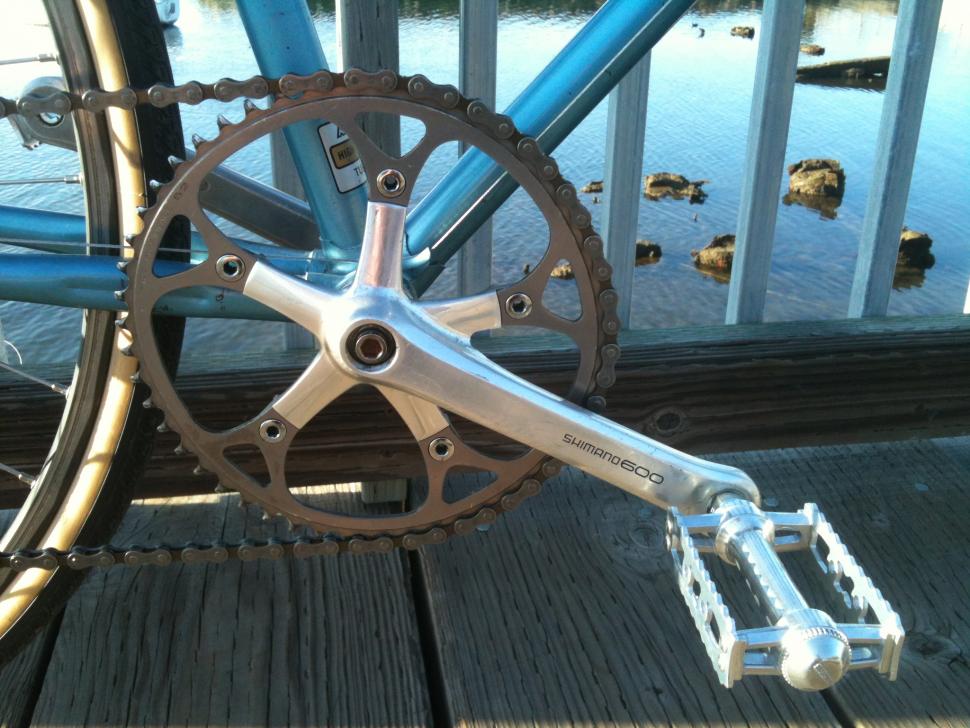
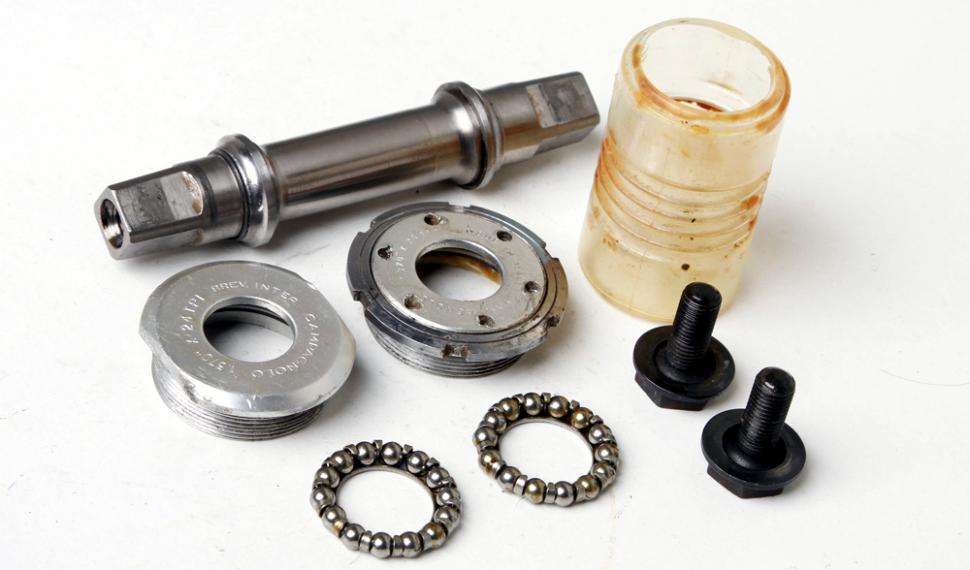
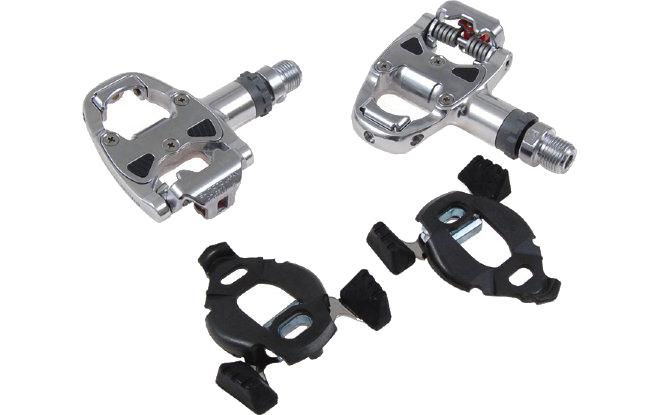
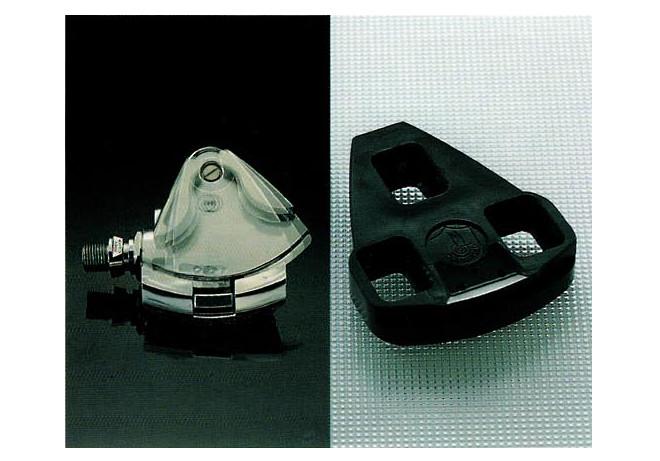
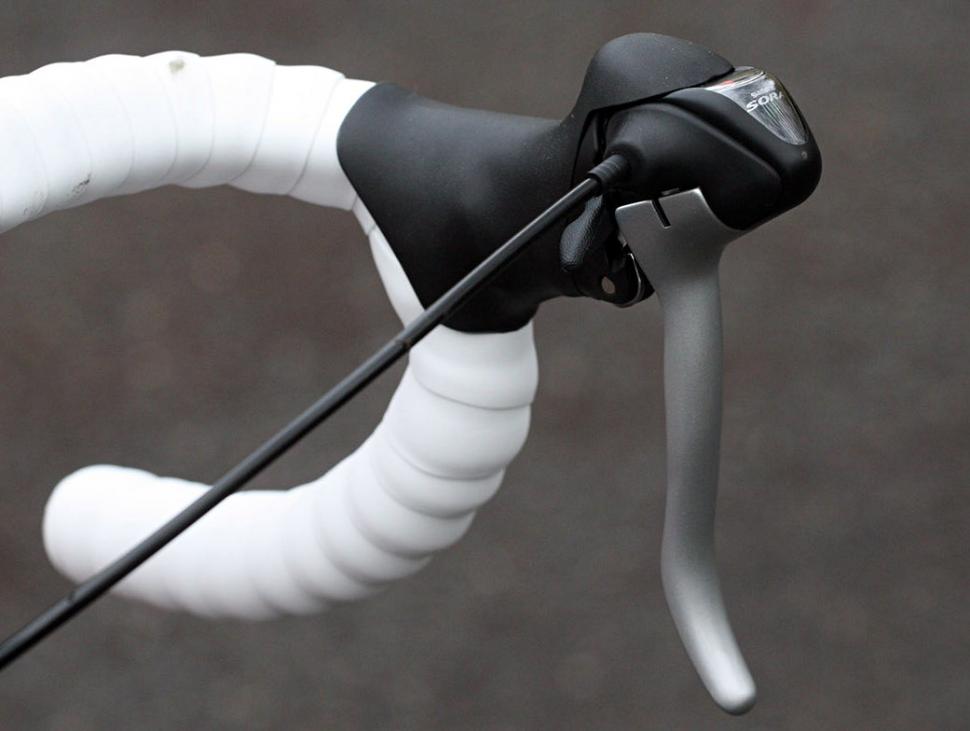

Add new comment
92 comments
Deltas are tricky to set up if you don't know what you are doing but I've never found the braking to be any worse than other models of the same era. The trick is to leave more clearance from the rim than usual. sure they weigh more, but LOOK AT THEM. C record is still the best look groupset of all time and the stuff lasts.
Campag's pedals however, were pure lunacy. but they do make a lovely paper weight.
Campy actually did some serous inovation in 1986-1988. Among the derailures the C180 was the only one without inovation. The Chorus was pretty special and advanced with both double springs (simplex) and a slant pralelogram (suntour) and a strikng visual appreance.
The Athena derailure looked simple and was disguised as a C180 and the well known old gransport design actually had a consealed slant paralelogram with a quite long praalellogram (The suntour patent had just expired).
Shifting the athena on a modern 10-11 cassette actually reveals that this design was 30 years ahead of its time and it works surprisingly consistent, ultrafast and reliable, even with non indexed shifters (i use classic Simplex retro-frictions though). It's basicly the same design as used today on Shimano's Shadow and SRAM's type 1.x MTB deraillures. Capacity is impressive too - the ultra short 50mm cage can shift a 12-30t casette with a double compact in the front.
Among the brakes the Chorus monplaners (with one caliper arm consealed in the other) are IMHO the most beutifull brake ever produced - The Athena 's were re-egineerd traditional sidepulswith massive super stiff calipers - stiffness (here provided by mass) really matters when it comes to braking. Im not sure if the stiffness was intentional by design or it was because they wanted to mimick the visual appearence of the Chorus monoplaners / aro-theme while keeping the cost down, but the Athena Calipers are proberbly the best braking sidepull rim brake ever produced. They are heavy though, similar in weight to Deltas but they work every time, modulation is excelent (even by 2016 standards they rival the best dulapivots out there) and due to the stiffness they really do keep provideing all power you can apply through the cable (and i mean all), and in an impressive consitant way - only downside is that with 198'x brakelevers and cables you'd have to use a lot of fingermuscle to utilize that kind of power.
Strangely, in the late 80'es the best perfoming Campy components where the Athena's - and they also had that milk/mirror smooth polished anadonized surface of the C180 (a finish no one has ever attempted to out-do - the bling record stuff from the 199x and 200x cant match the drooling 1986-1989 finish)
Campagnolo Syncro - i think thats someting everyone should forget though, the doubler-shifter was the way to go but it was never as nice as the 197x Simplex' retro-shifters.
Pages